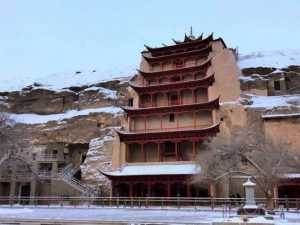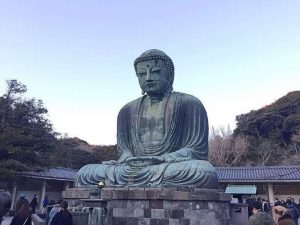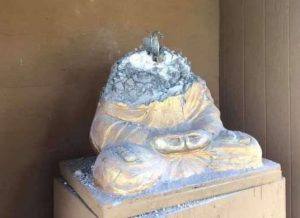Her Imperial Majesty
Two days ago, 16 October marked the 1,333rd anniversary of the day Wu Zetian (武則天) (624–705) became China’s first and only female emperor in 690. She had changed her original name of 曌 (zhao) to one that indicated the illuminating of emptiness by the sun and moon, and her rulership of the world. There have been many sons of heaven (tianzi 天子), but only one of them could be called the “daughter of heaven.” The 16th, the ninth day of the ninth lunar month, marked her 1,333rd anniversary.
It goes without saying that she was one of the most extraordinary women in world history, and by right of her accomplishment, far and away the most significant woman in Tang China. In a male-dominated milieu of patriarchal Tang (618–907) China, she defied all manner of personal and institutional challenges to ascend the dragon throne. She redefined the emperor’s Confucian duties to the empire in much more cosmic, Buddhist terms: she declared herself Maitreya incarnate and a chakravartin, a Wheel-Turning Monarch.
Wu Zetian’s origins are uncertain, but we can be certain that she was born as Wu Zhao and introduced to Buddhism by her parents. She would even briefly be a Buddhist nun at one point (although she spurned this life path) (Association for Asian Studies). When she was merely 14, she began life in Emperor Taizong’s (598–649) imperial harem as a concubine of the fifth rank (cairen). She rapidly maneuvered, seduced, and endured her way to seizing political control following Emperor Gaozong’s (628–83) stroke in 660. In 690, having amassed at her side a stellar group of political advisors, military commanders, and Buddhist preceptors, and magicians, 66-year-old Wu Zetian overthrew the Tang Dynasty and declared herself emperor, renaming her new empire “Zhou.”

While her reign lasted only from 684–705, sometimes being called an “interregnum” of the Tang, it was ushered in an era of scientific, artistic, and cultural development. Her reign was more concerned with the situation of women throughout the empire. Furthermore, it was during this 15-year period that we can see how Buddhism in China came closest to being a state religion. Perhaps the only time Buddhism ever came close to the influence it enjoyed under Wu Zetian was during a decade shortly after her rule, when the imperial esoteric Buddhism of Amoghavajra (705–74) dominated the restored Tang court from 755–765.
The Esoteric Connection
At Wu Zetian’s court were the Indian monk Bodhiruci (Putiliuzhi 菩提流志, d. 722), the Khotanese monk Śikṣānanda (Shichanantuo 實 叉難陀, 651–710), who retranslated the Avataṃsaka Sūtra (Huayan jing 華嚴經); and the Chinese monk Yijing (義淨, 635–713). Her most closely associated, and generously sponsored, schools were Huayan Buddhism and the nascent imperial esoteric Buddhism that Amoghavajra would later take to new heights. As Dorothy Wong notes,
. . . there was a coterie of foreign monks who were largely responsible for the propagation of esoteric elements in Tang Buddhism (sometimes called “Empress Wu’s Esoteric Buddhism”), including Divākara (地婆訶羅, or Rizhao 日照 in Chinese, 613–687 CE) from Central India; the Kashmiri monk Baosiwei 寶思惟 (d. 721), or Maṇicintana; and Li Wuchan 李無諂, from northwestern India. . . . Empress Wu eagerly endorsed the new deities and the associated rituals and practices. These activities paved the way for the reception of the Esoteric school in the 8th century, anticipating the arrival of the three Tantric masters Śubhākarasiṃha (Ch. Shanwuwei 善無畏, 637–735), Vajrabodhi (Ch. Jingangzhi 金剛智, 669–741), and Amoghavajra (Ch. Bukong 不空, 705–74) at the Tang court.
(Wong 2012, 225 – 26)
Wong also writes that Wu Zetian sponsored a new translation of the Huayan jing, and one of her most trusted advisors was Fazang 法藏 (643–712), the third patriarch of the Huayan school. Critically, in the Huayan cosmology, Vairocana is the embodiment of the dharmakaya and the absolute, transcendent Buddha pervading the universe. Her reverence of Vairocana would have major symbolic implications for her reign as well as the connection to esoteric Buddhism: “This cosmological concept informed the iconography of the Fengxian Temple 奉先寺 at Longmen 龍門, built in 672–675, with the colossal statue of Roshana (Lushena 盧舍那) or Vairocana (Biluzhena 毗盧遮那) presiding over the pantheon (Figure 1)” (Wong 2012, 223).
The Imprint of China’s Only Female Emperor: The Fengxian Temple
The Fengxian Temple was part of the Longmen Grottoes, a breathtaking network of Buddhist cave temples and shrines located deep within China’s Henan Province, tucked against the steep cliffs of the Yi River and shrouded in the mists of a romantic past. As a UNESCO World Heritage site, this huge network of caves, niches, and alcoves serve as a tremendous tribute to Buddhist art. They span centuries and do not fall under a single historical period. They also serve as an artistic mirror reflecting the various sociopolitical milieus of the time. Longmen’s Fengxian Temple proudly shows to visitors and tourists today Wu Zetian’s power and vision, etched into the stone, her imprint living on far beyond her short-lived dynasty. (UNESCO)
Wu Zetian actually patronized many sacred Buddhist locales, including Mount Wutai, where she associated herself with Manjushri (Rothschild 2021, 12). But thanks to her work on the Fengxian Caves, the carving of the Longmen Grottoes reached its pinnacle under her reign. (thepaper.cn) She blended art into her project of imperial legitimization, seeing Buddhist sculpture as a potent instrument for strengthening her reign and projecting her power as divine (Kareyzky 2013, 280).
The Fengxian Temple was a manifestation of Wu Zetian’s rule because of its central image, the Vairocana Buddha. The Vairocana Buddha sits here, ruling over the cave with a peaceful majesty. This statue towers over visitors at a total height of 17.14 meters, its head alone being 4 meters tall. Its beautiful ears are 1.9 meters long. With a mysterious smile, wide forehead and plump cheeks, long earlobes, crescent eye-brows, and piercing eyes, this Buddha shows a vivid impression of elegance, solemnity, quietness and majesty. Along the two sides, there are two disciples, two bodhisattvas, two heavenly kings, and two warriors. (China Discovery)
Popular culture has assumed that this statue to be a “portrait” of the emperor at 44 years old (therefore exactly 22 years before her accession, indicating once more her obsession with auspicious dates), symbolising her celestial authority and her earthly strength. Although this idea is still up in the air (since no one truly knows what she looked like), what is absolutely certain is that Wu Zetian saw herself as representing Vairocana (Colla 2018, 21). The esoteric connection with Huayan Buddhism is clear: they share the same principal deity of Vairocana. As Wong notes, the Leigutai statue, also from Longmen and considered an esoteric manifestation of Vairocana, dates to about 700, the time of Empress Wu: “Several woodblock prints of the Mahāpratisarā Dhāraṇī (Dasuiqiu tuoluoni 大隨求陀羅尼, Dhāraṇī of the Great Protectress), translated into Chinese by Maṇicintana in 693, have been found at Chang’an. Printed both in Sanskrit and in Chinese, some perhaps date to as early as the 8th and 9th centuries; these examples show that esoteric cults were spreading in China.” (Wong 2012, 229)
Aside from Wu Zetian’s affinity with Vairocana, her initiative to tie herself to Manjushri on Mount Wutai, and her claim to be the bodhisattva Maitreya, esoteric forms of Avalokiteshvara flourished under her reign (Wong 2012, 229–30), and Buddhist scribes constructed a narrative about her fulfilling a prophecy of a “female warrior sovereign,” Vimalaprabhā (Rothschild 2021, 18–19). On the whole, esoteric Buddhist ideas proliferated across the empire and found physical and architectural expression under her rule. The textual and material evidence left behind from this period attest to how Wu Zetian connected herself to all these channels and figures of mystic, holy authority.
Proclaim Her Reign
Before and after Wu Zetian, Buddhism never could surpass Confucianism’s influence as a state ideology, and it was always subject to inspection and censorship (Colla 2018, 19). Buddhism has historically been inseparable from the prerogatives of the state (Goble 2019, 176), and Mark Edward Lewis’ definition of an “official Buddhist establishment,” or Imperial Buddhism, subordinates “Buddhism” to the “Imperial”:
For several centuries, a series of monarchs attempted to renovate the Chinese political order by building an explicitly Buddhist state, a state that justified itself at least in part through its patronage of Buddhism. Central to these attempts was the creation of an official Buddhist establishment, housed in state temples, performing rituals for the benefit of the ruling house and the empire, and compiling massive, officially approved collections of canonical texts.
(Lewis 1990, 232)
This was the case even for someone as contrarian as Wu Zetian. It is also important to note that she also was devoted to Daoism, and Buddhism, much like her palace lovers, never received exclusive attention. Nevertheless, if we are audacious enough to continue the analogy of a lover for Buddhism, the Fengxian Temple could be said to have been an exquisite and sincere gift from her. Thanks to this generous arts patron, the grottoes grew significantly as a result of her charitable gifts. (Wong 2012, 223)
The Fengxian Temple, where the stone walls bore the imprint of Wu Zetian’s unique blend of spiritual desire and political ambition, is the most outstanding example of Wu Zetian’s Huayan-esoteric syncretism. Its statues tell the story of an emperor – history’s one and only female emperor – who used art as a canvas to express her enduring legacy, integrating spiritual, political, and cultural components into a unique blend that resonates through the halls of history. The Grottoes serve as a striking reminder of Wu Zetian’s rule, when a woman rose to the pinnacle of authority in a patriarchal society, and Buddhism was more powerful than ever before.
References
Elisabetta Colla. 2018. “When the Emperor Is a Woman: The Case of Wu Zetian武則天 (624–705), the ‘Emulator of Heaven’.” In Elena Woodacre (e.d.). 2018. A Companion to Global Queenship. Leeds: Arc Humanities Press
Geoffrey C. Goble. 2019. Chinese Esoteric Buddhism: Amoghavajra, the Ruling Elite, and the Emergence of a Tradition. New York: Columbia University Press
Patricia Eichenbaum Karetzky. 2013. Chinese Religious Art. Lanham, Maryland: Lexington Books.
Mark Edward Lewis. 1990. “The Suppression of the Three Stages Sect: Apocrypha as a Political Issue.” In Robert E. Buswell (e.d.). 1990. Chinese Buddhist Apocrypha. Honolulu: University of Hawaii Press.
N. Harry Rothschild. 2021. “Chrysanthemum Cakravartin: How the Convergence of the Double Ninth Festival and a Buddhist Prophecy of a Female Warrior King Helped Wu Zhao Inaugurate the Zhou Dynasty and Fashion a New Paradigm of Political Authority.” In Tang Studies, Number 39, 2021, 1–39.
Dorothy C. Wong. 2012. “The Art of Avataṃsaka Buddhism at the Courts of Empress Wu and Emperor Shōmu/Empress Kōmyō.” In R. M. Gimello, Frédéric Girard, & Imre Hamar. 2012. Avatamsaka Buddhism in East Asia: Huayan, Kegon, Flower Ornament Buddhism: Origins and Adaptation of a Visual Culture. Wiesbaden: Harrassowitz Verlag.
See more
Longmen Grottoes (UNESCO)
Wu Zhao: Ruler of Tang Dynasty China (Association for Asian Studies)
卢舍那佛为何以武则天为原型 (thepaper.cn)
Related features from BDG
Where/What/When is nirvāṇa?
Traversing China for the Forgotten Pure Land of Maitreya Buddha
Related blog posts from BDG
On The Hunt for the Water Moon Guanyin in “Pre-Genghis Esoteric North Asia”















